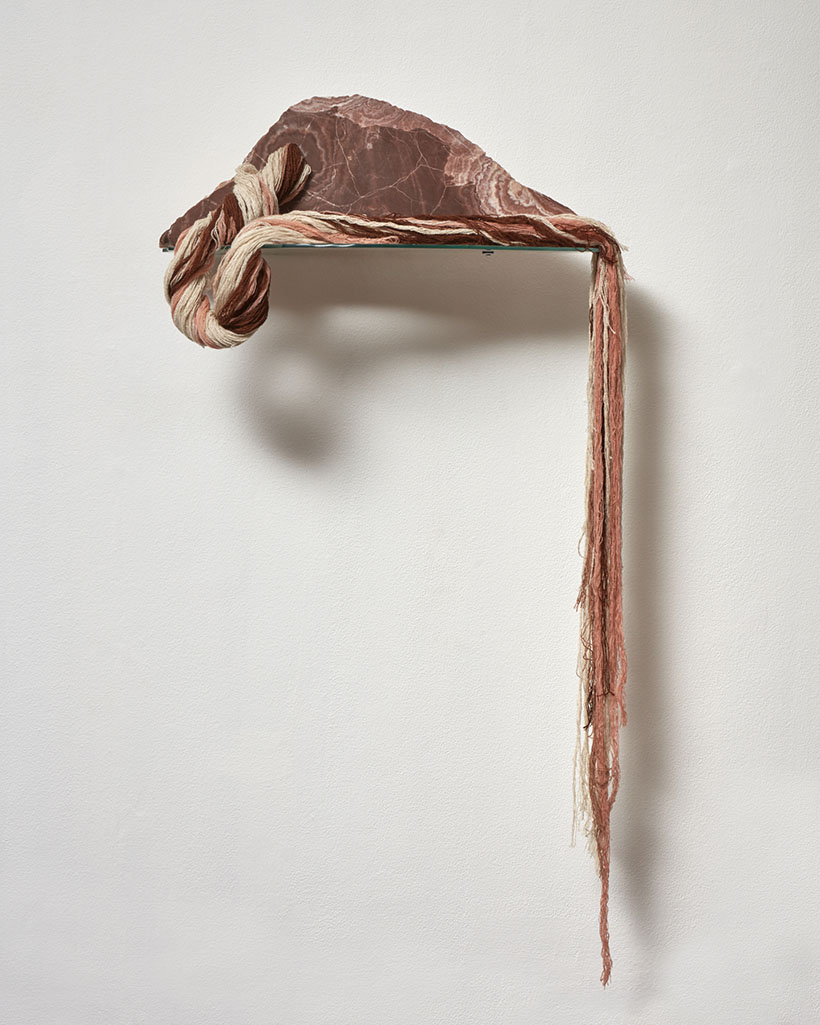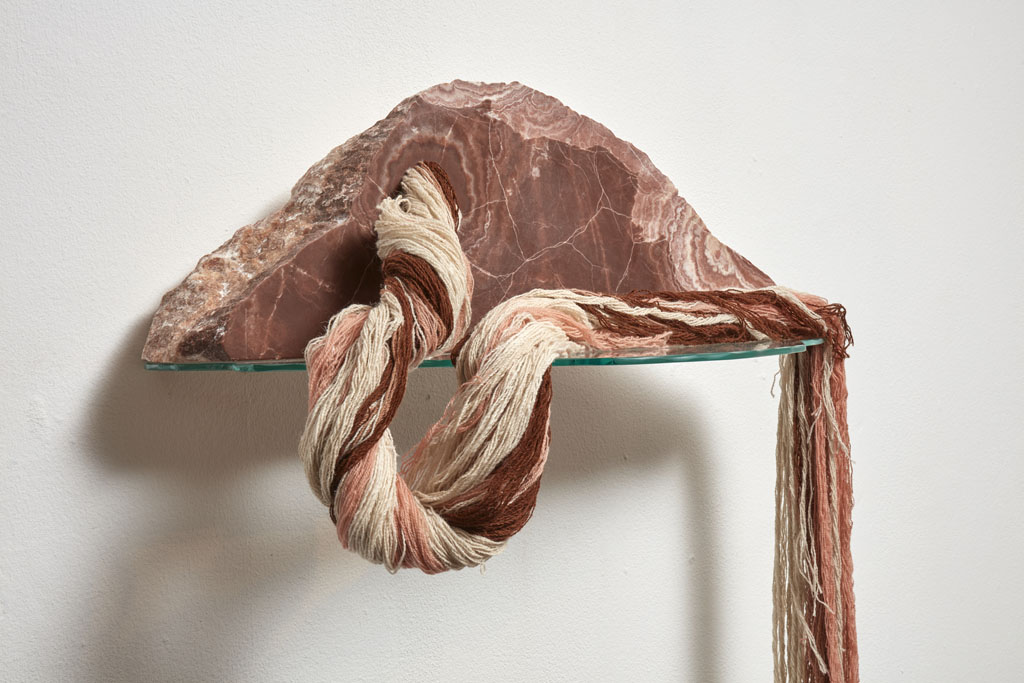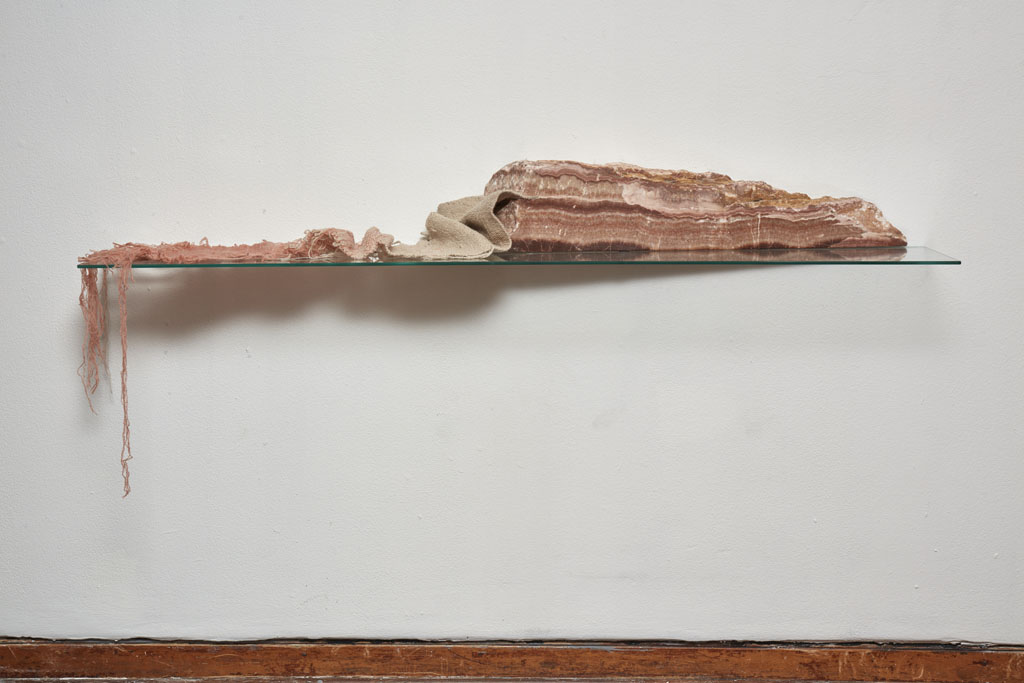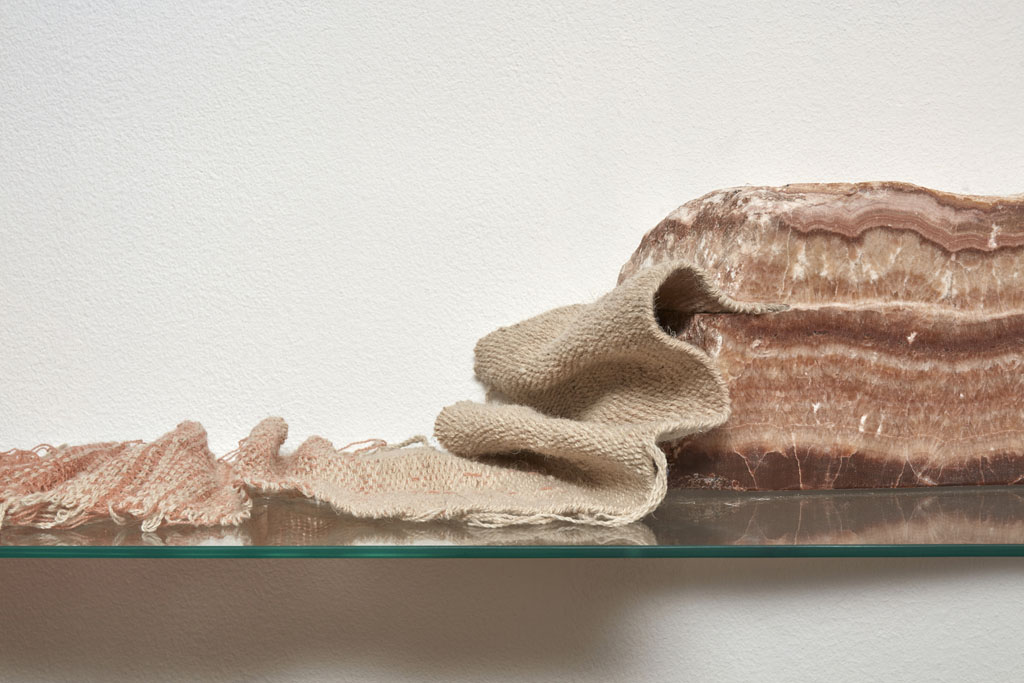
Boceto de telar inspirado en biodiversidad del Perú.
UNWEAVE THE IMAGES
We excavate the earth crust to find sediments and decipher the discontinuous process of stratigraphy. Each strata is like the fiber of a mineral tissue. The vegetables fossilize and settle in the form of mineral remains; the mineral is absorbed by plants and becomes nourishment for animals. One becomes the footprint of the other in a continuous tissue.
Knitting relates us to our surroundings.
Everywhere there exist different fibers, and particular techniques and uses have developed for each one of them. Natives have developed varied skills to work animal furs and plant-based fibers. Some know how to embroider, others weave on looms and create other basketry products. Fibers can grow in different places, but with changes to their toughness, density and color. Where junco grows, baskets are woven; tapestries are made where there is totora and hats were there is toquilla. Different fibers and techniques in each place.
Fibers follow organic shapes and take on the shape of the body they cover when knit. A basket is woven around a mold, just like the tree bark folds around the trunk, or geological layers surround and cover the earth. The tissue folds; it covers us and protects us. It is the surface that surrounds us.
In a loom, animal fibers, plant dyes and mineral pigments become a single tissue. The fibers and threads bend, dye and intertwine one over the other in a discontinuous or interlayered fashion, forming different patterns. Each pattern creates a unique texture in the surface. The artisans understand this process and mold the place’s memory with their hands. As makers, they are able to understand the transformation of the material they employ, which begins in the place where the fibers grow, all the way to the moment in which their hands compose them and give them the finishing touch.
To look into the place is to unravel its image. To peel its layers and the footprints of time to find the fibers and patterns that have formed. To unravel the image is to dismember it in touch-sensitive fibers. It is to penetrate into the skin of the visible surface and understand the manual and bodily processes through which it was formed. To relearn the artisans’ labor means reestablishing contact with these processes. It means understanding there is a footprint left by the body and nature behind that image.
CONCEPT AND DESIGN
RAFAEL FREYRE Y ANA BARBOZA
REED WEAVE
SAMUEL Y EBER GOICOCHEA
FABRIC WEAVE
ELVIA PAUCAR
STONE WORK
ROBERTO ROMÁN

Ilustración en blanco y negro de canastas de junco. Black and white illustration of reed baskets.

Pieza tejida con junco de los humedales de Huacho (Lima). Woven piece with reed from the wetlands of Huacho (Lima).


Pieza tejida con telar y teñida con tintes vegetales y animales. Piece woven with loom and dyed with vegetable and animal dyes.


Escultura de Ónix de Huancayo, lana de oveja y alpaca teñida con tinte natural, y vidrio. Onyx from Huancayo, sheep wool and alpaca dyed with natural dye, and glass.



Ovillos de piedra. Stone clews.
